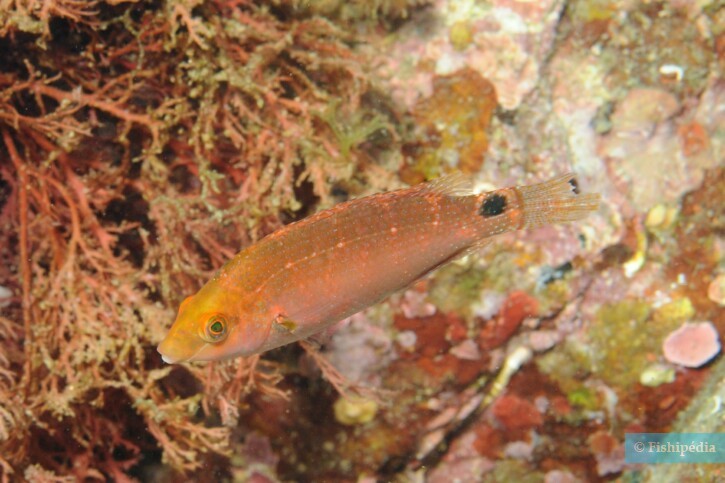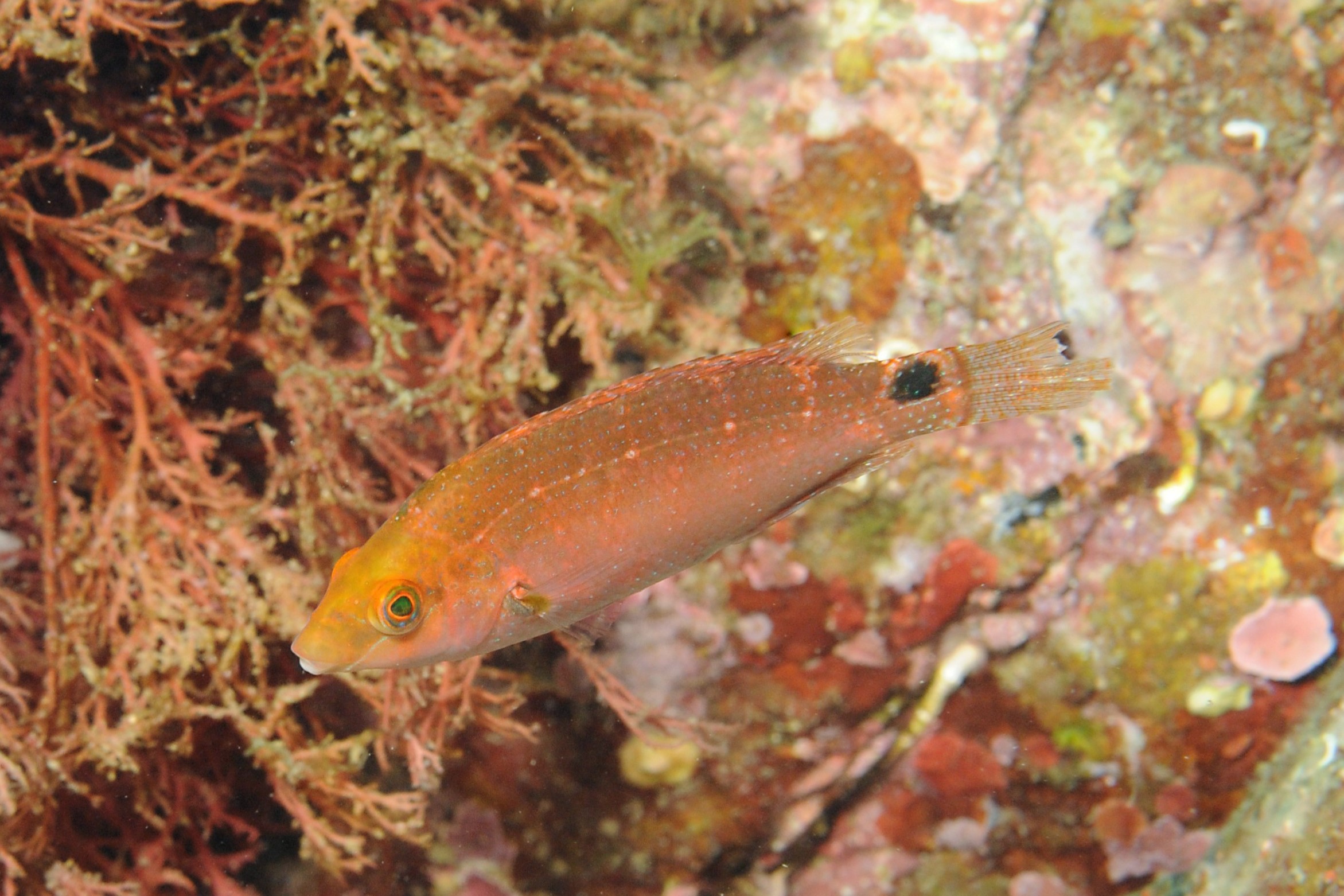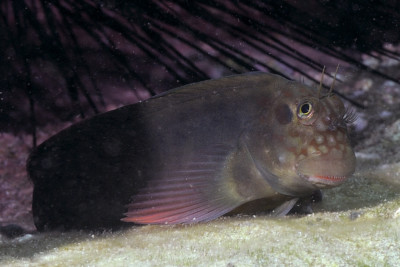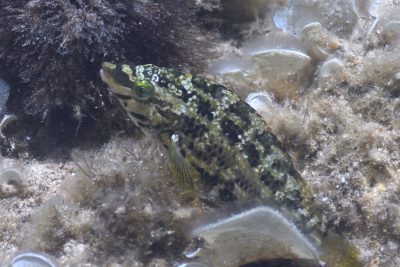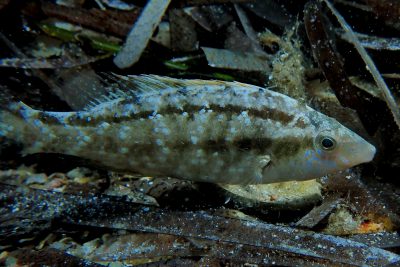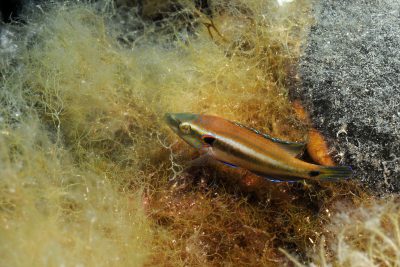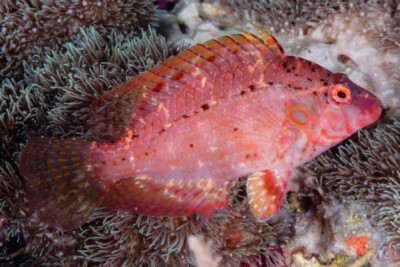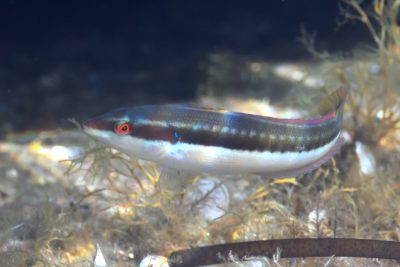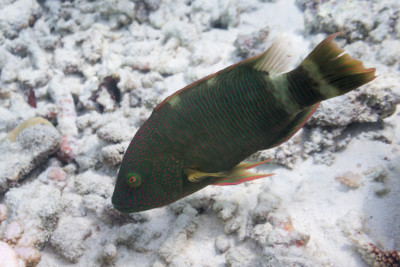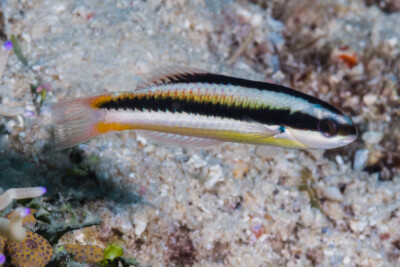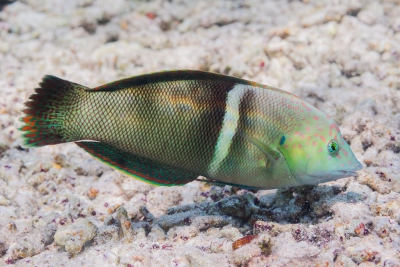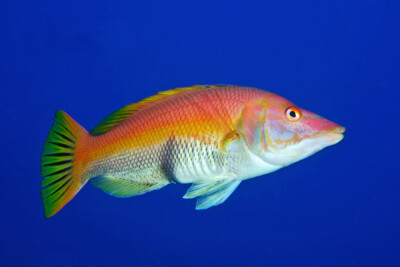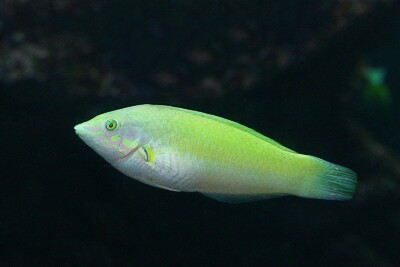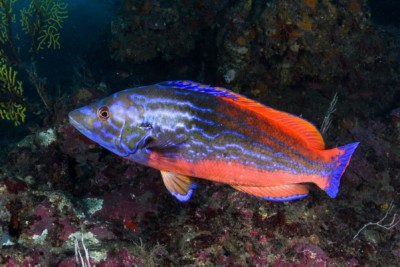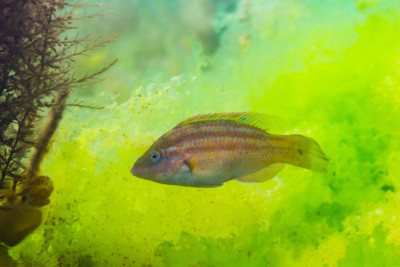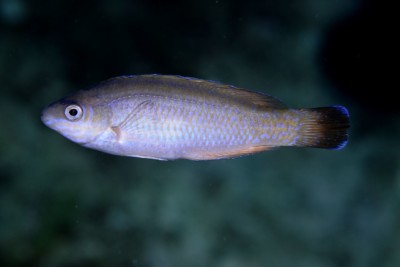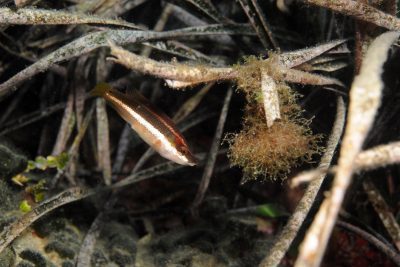Introduction
The axillary wrasse is a small wrasse that inhabits rocky areas and seagrass beds along the Mediterranean coasts. It is also found from the temperate waters of the Atlantic coast to the Azores. The males are among the most colorful fish in these habitats.
Who is it?
Morphology
-
Type
-
Average size12 cm
-
Maximum size18 cm
-
ShapeRectangular
-
Type
-
Average size12 cm
-
Maximum size18 cm
-
ShapeRectangular
How to recognize This fish ?
Together with the ocellated wrasse, it is one of the most colorful fish in the Mediterranean. The body is elongated, similar to the ocellated wrasse. The color can vary depending on the substrate and stress levels.
It is easily distinguished by its color pattern and yellow eye. It differs from the ocellated wrasse by the absence of a greenish spot near the operculum. The upper flank is beige, while the lower part is lighter. Some individuals take on an orange-yellow hue.
Sexual dimorphism
Males grow faster than females and are larger in size.
Behaviour & Life cycle
-
dietomnivorous with carnivorous tendency
-
Sociabilityliving as a couple or alone
-
territorialYes
-
Way of livingdiurnal
Like most wrasses, juveniles inhabit shallow waters in seagrass beds and rocky areas, often in the company of similar species.
Adults are encountered in pairs in seagrass beds. These fish are quite shy and more difficult to observe compared to the peacock wrasse or the rainbow wrasse.
Males are territorial during the breeding season. Dominant females and males may live in scattered groups. Their diet typically includes mollusks, gastropods, bivalves, tube worms, chitons, sea urchins, and bryozoans.
Reproduction
-
Reproductionovipare qui pond sur substrat découvert
-
Hermaphroditeprotogynous
Reproduction takes place from spring to early summer. The dominant male prepares an algae nest in the shape of a cup.
Once the nest is constructed, he attracts one or more females through courtship displays. After spawning, the male fertilizes the eggs and starts to protect his offspring. The female does not stay after spawning and shows no concern for the eggs.
During this period, males are particularly aggressive towards other males of the same species. Intimidation displays and fights are common. It is possible that "satellite males", pretending to be females, participate in fertilization by releasing quick ejaculations over the nest, but this behavior needs further confirmation.
Harmless species
This species does not represent any particular threats to humans when encountered in its natural environment.
Origin and distribution
Geographic distribution & Conservation
The axillary wrasse is mainly found in the Mediterranean Sea and the Black Sea, but it can also be encountered along the Atlantic coasts. It is also present in the Azores and the Moroccan coasts. It has a wider distribution than its Mediterranean cousins and generally inhabits the same regions as the peacock wrasse.
Conservation status of populations (IUCN)
What is its habitat?
Natural environment characteristics
-
Temperature16 - 28 °C
-
Depth0 - 25 m
Biotope presentation
This wrasse is usually found at depths of less than 50 meters, in most rocky areas and seagrass beds.
Species of the same biotope
Fishkeeping
Not recommended
We do not recommend keeping this species in an aquarium. It has unpredictable needs which, if not met, generate significant stress, potentially leading to a shorter life expectancy, an interruption of its growth or the development of pathogens.
To go further
Sources & Contributions
Participation & Validation
The Fishipedia team and specialist contributors are committed to providing high-quality content. However, although the information comes from scientific sources or testimonials from specialists, the cards may contain inaccuracies.

Benoit Chartrer
Translation
Translation done with the valuable contribution of our translators, who make this information available to a wider audience. We sincerely thank them for their commitment.
Scientific partners
Tags
Species of the same family
Same genus
Species of the same biotope
